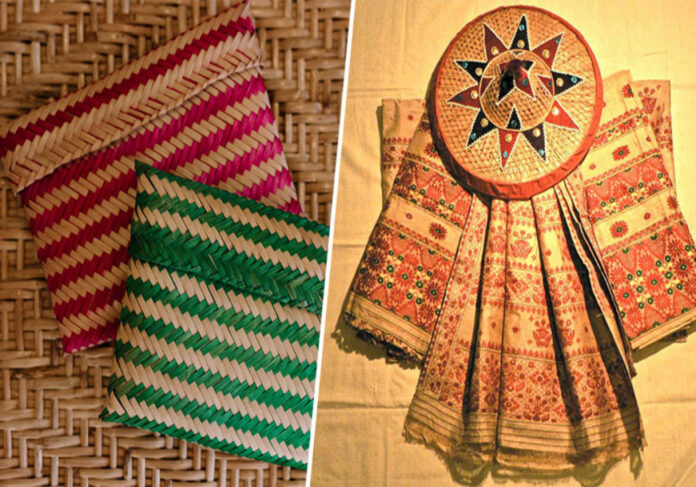Tripura, a land of rich cultural heritage and diverse traditions, boasts an exceptional art form known as Tuisa, an intricate handwoven textile craft that holds deep-rooted significance in the state’s cultural tapestry. Tuisa, also spelled as ‘Tuisami’ or ‘Tusha’, represents not just a beautiful fabric but also embodies the skilled craftsmanship and artistic expressions of the weavers who have mastered this traditional technique over generations.
The Origins and History of Tuisa:
The origins of Tuisa can be traced back to centuries ago when skilled weavers from various tribes and communities in Tripura began experimenting with different weaving techniques and patterns. Over time, Tuisa evolved into a distinguished textile art form, reflecting the cultural amalgamation of the state.
Tuisa: The Art of Handloom Weaving:
At the heart of Tuisa lies the art of handloom weaving, where skilled artisans transform raw materials into fine and vibrant fabrics. The process begins with carefully selecting the finest quality silk threads, which are then dyed using natural dyes to achieve a wide spectrum of colors. The weavers then intricately interlace the dyed threads on traditional wooden looms to create exquisite patterns and designs.
Distinctive Designs and Patterns:
What sets Tuisa apart from other handwoven textiles is its distinctive designs and patterns. The artisans employ a range of motifs inspired by nature, such as flowers, birds, animals, and geometric shapes. The unique use of vibrant colors and intricate designs not only enhances the beauty of the fabric but also showcases the weavers’ artistic skills and creativity.
Cultural Significance of Tuisa:
Tuisa holds immense cultural significance in Tripura and is an integral part of various traditional ceremonies and festivals. It is often used to craft elegant attire for special occasions, weddings, and religious events. Additionally, Tuisa textiles are passed down through generations as heirlooms, symbolizing the legacy of craftsmanship and artistic heritage.
Preserving Tuisa: Challenges and Efforts:
While Tuisa is an emblem of Tripura’s cultural identity, the traditional craft faces challenges in the modern era. The advent of mechanized looms and synthetic fabrics has impacted the demand for handwoven textiles, leading to a decline in the number of skilled Tuisa weavers. Moreover, the lack of awareness and marketing opportunities poses a threat to the preservation of this art form.
However, despite these challenges, there have been concerted efforts by the government and various non-governmental organizations to revitalize Tuisa and promote its appreciation. Skill development programs and workshops are organized to train the younger generation in the art of Tuisa weaving, ensuring the transfer of knowledge from master weavers to aspiring artisans.
Empowering Tuisa Artisans:
Recognizing the importance of preserving this unique heritage, several initiatives have been taken to empower Tuisa weavers economically and socially. Artisan cooperatives have been established to provide weavers with a platform to showcase their creations and gain access to larger markets. Fair trade practices and sustainable pricing models are being implemented to ensure that the artisans receive fair remuneration for their painstaking efforts.
Promoting Tuisa: A Symbol of Tripura’s Rich Cultural Heritage:
Promoting Tuisa goes beyond just celebrating a traditional craft; it is about nurturing the cultural legacy of Tripura. By encouraging the use of Tuisa textiles in modern fashion and lifestyle, there is an opportunity to create a global market for these exquisite fabrics. Art and cultural festivals are organized to showcase Tuisa’s beauty and cultural significance to a broader audience, both within the state and beyond.
Tuisa stands as a testament to Tripura’s rich cultural heritage and artistic brilliance. Its intricate designs, vibrant colors, and skilled craftsmanship make it a cherished and revered art form. By preserving and promoting Tuisa, we not only safeguard the legacy of our ancestors but also empower the artisans who have dedicated their lives to keeping this traditional art alive. Tuisa, with its timeless allure, continues to weave the threads of Tripura’s cultural identity into the fabric of our collective heritage.



